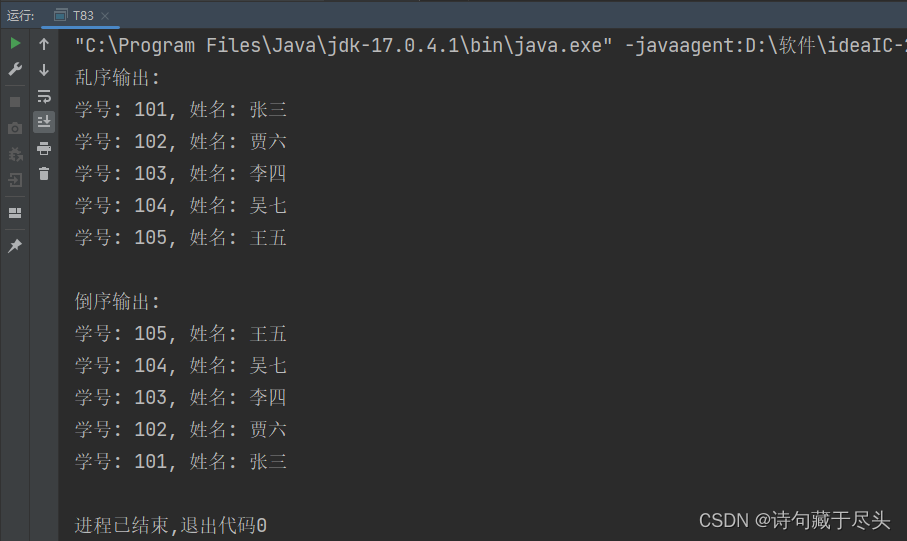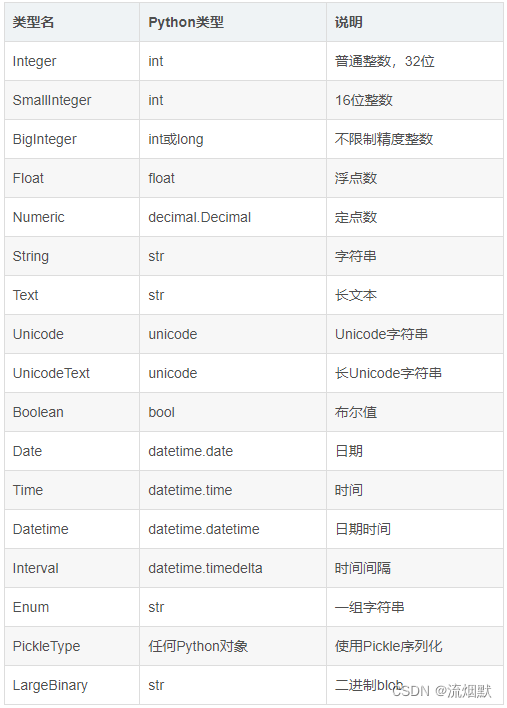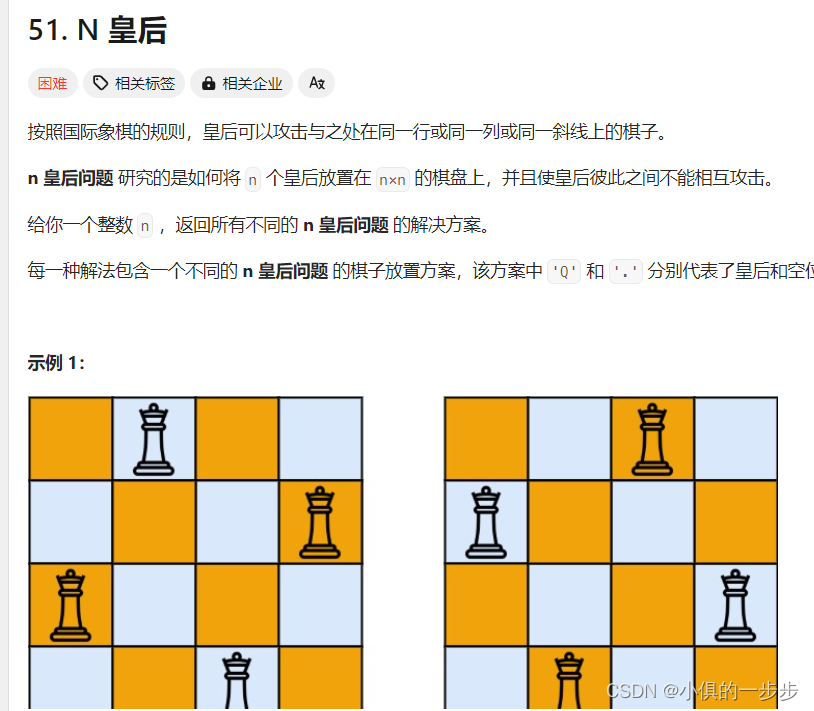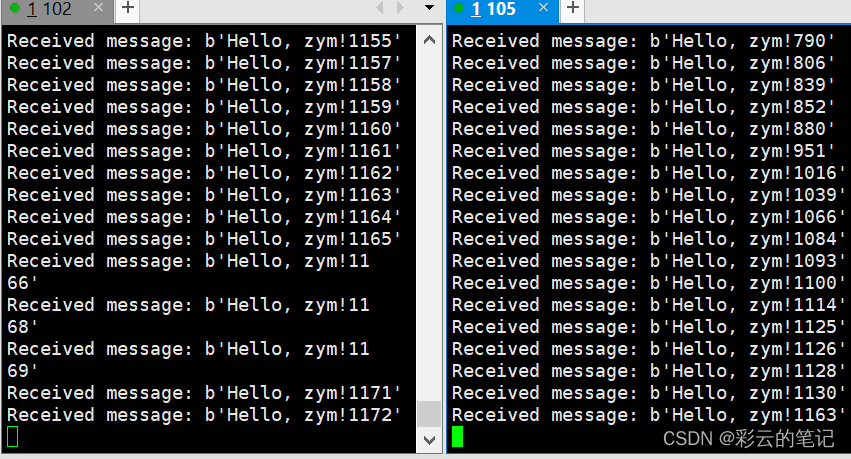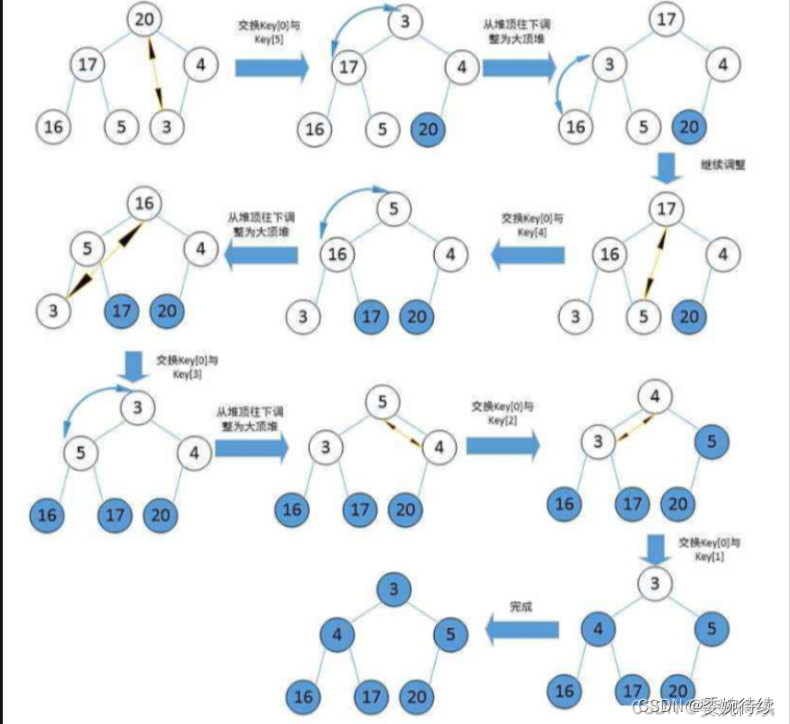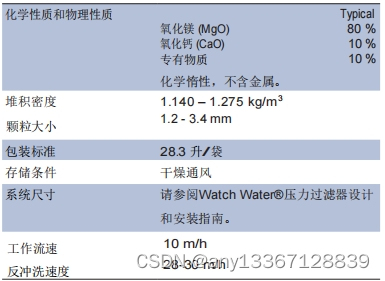题目:
1631. 最小体力消耗路径
你准备参加一场远足活动。给你一个二维 rows x columns 的地图 heights ,其中 heights[row][col] 表示格子 (row, col) 的高度。一开始你在最左上角的格子 (0, 0) ,且你希望去最右下角的格子 (rows-1, columns-1) (注意下标从 0 开始编号)。你每次可以往 上,下,左,右 四个方向之一移动,你想要找到耗费 体力 最小的一条路径。
一条路径耗费的 体力值 是路径上相邻格子之间 高度差绝对值 的 最大值 决定的。
请你返回从左上角走到右下角的最小 体力消耗值 。
示例 1:
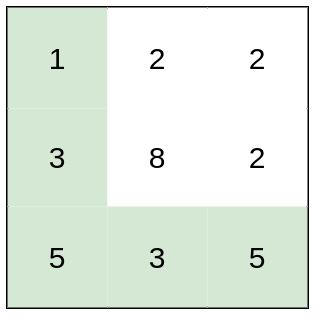
输入:heights = [[1,2,2],[3,8,2],[5,3,5]] 输出:2 解释:路径 [1,3,5,3,5] 连续格子的差值绝对值最大为 2 。 这条路径比路径 [1,2,2,2,5] 更优,因为另一条路径差值最大值为 3 。
示例 2:
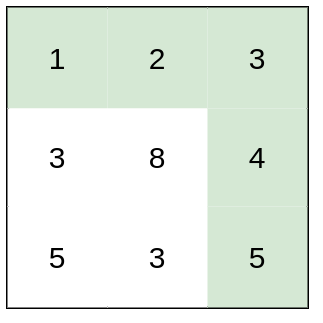
输入:heights = [[1,2,3],[3,8,4],[5,3,5]] 输出:1 解释:路径 [1,2,3,4,5] 的相邻格子差值绝对值最大为 1 ,比路径 [1,3,5,3,5] 更优。
示例 3:
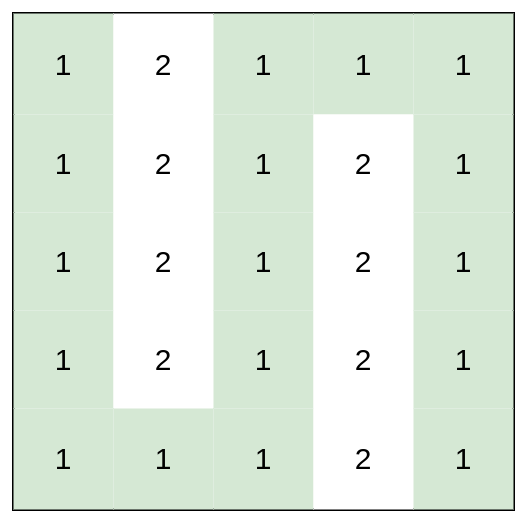
输入:heights = [[1,2,1,1,1],[1,2,1,2,1],[1,2,1,2,1],[1,2,1,2,1],[1,1,1,2,1]] 输出:0 解释:上图所示路径不需要消耗任何体力。
提示:
rows == heights.lengthcolumns == heights[i].length1 <= rows, columns <= 1001 <= heights[i][j] <= 106
解答:
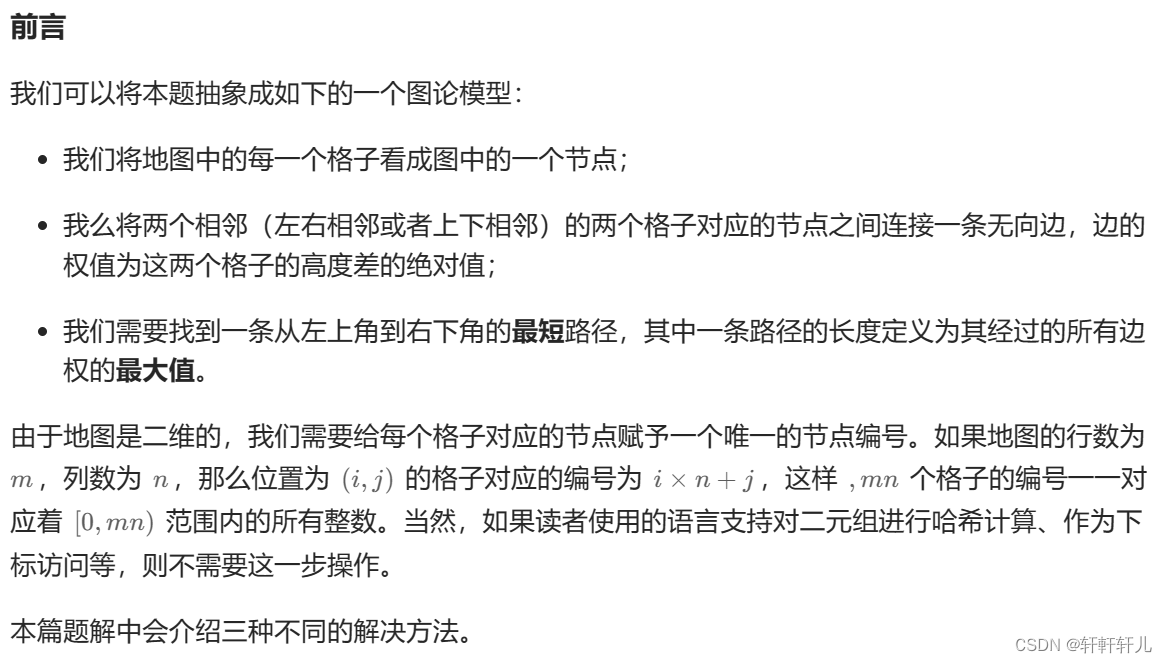
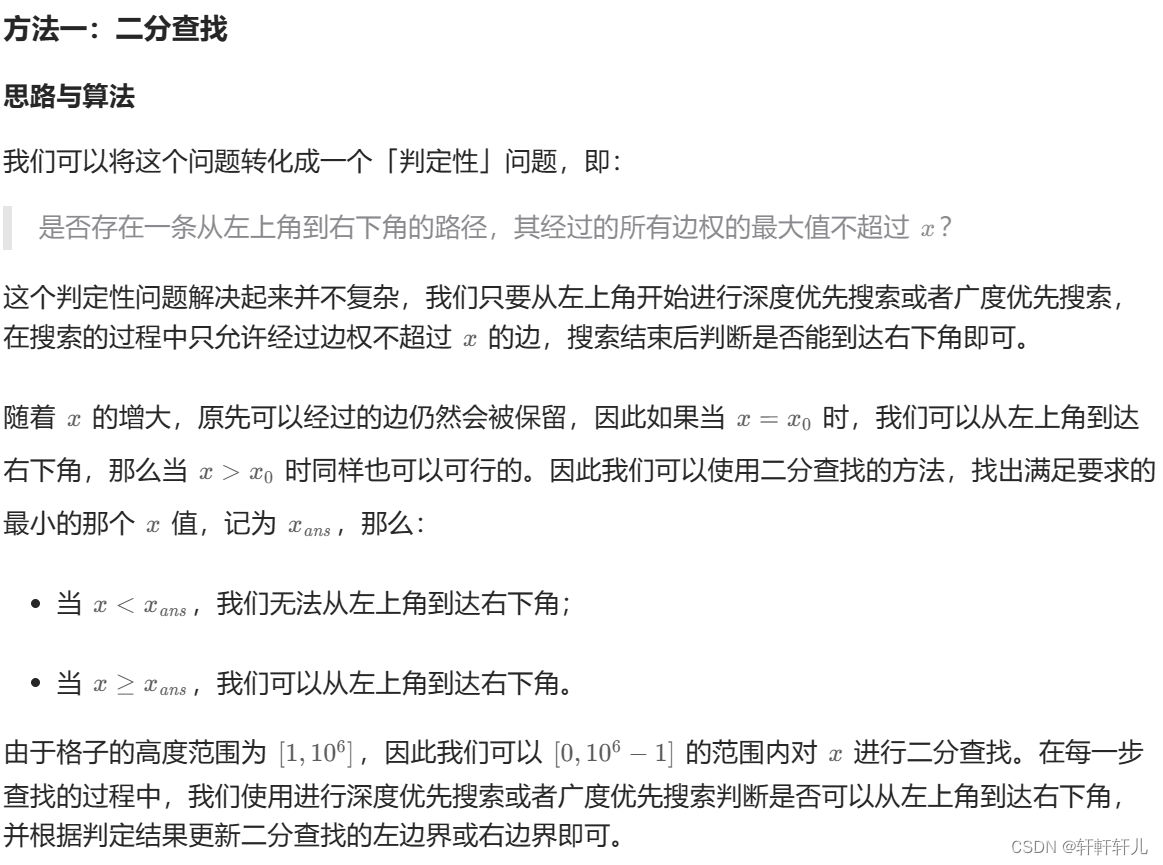

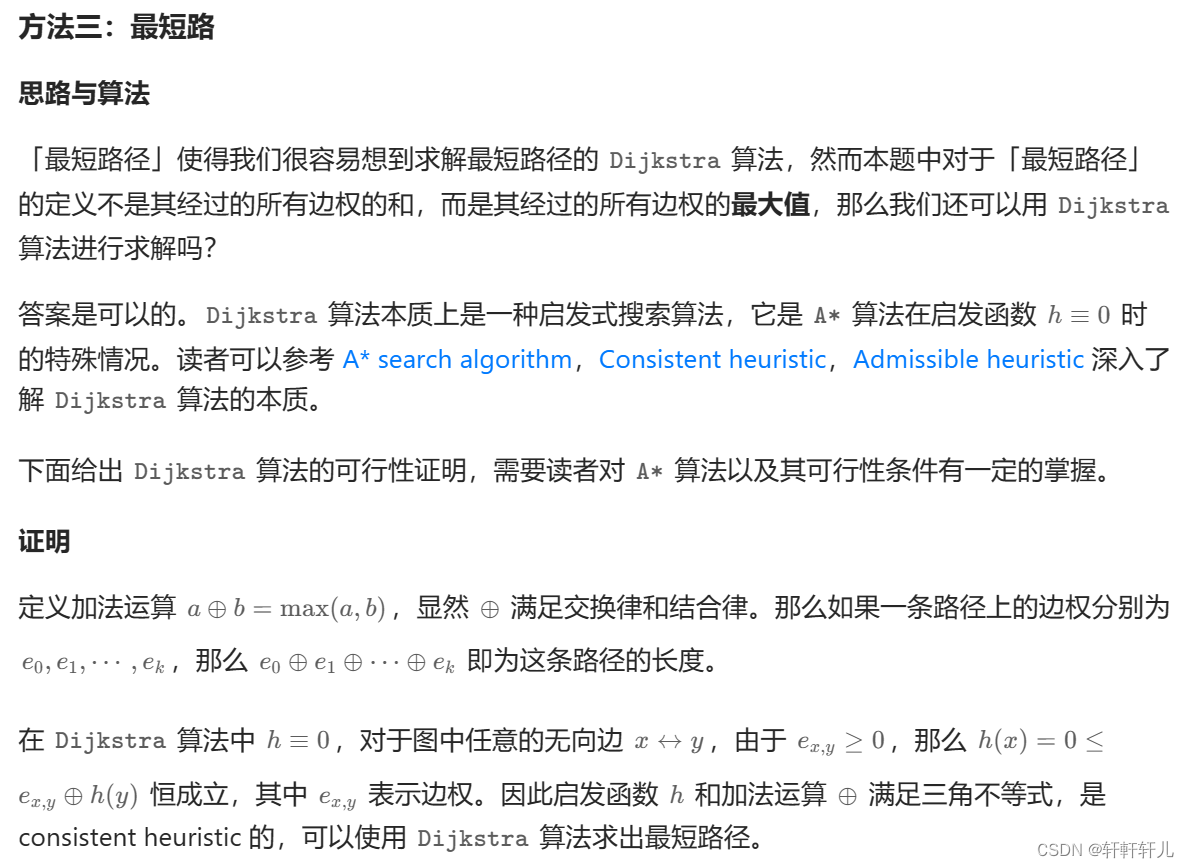
代码:
class Solution {
int[][] dirs={{-1,0},{1,0},{0,-1},{0,1}};
public int minimumEffortPath(int[][] heights) {
int m=heights.length;
int n=heights[0].length;
int left=0,right=999999,ans=0;
while(left<=right){
int mid=(left+right)/2;
Queue<int[]> queue=new LinkedList<int[]>();
queue.offer(new int[]{0,0});
boolean[] seen=new boolean[m*n];
seen[0]=true;
while(!queue.isEmpty()){
int[] cell=queue.poll();
int x=cell[0],y=cell[1];
for(int i=0;i<4;i++){
int nx=x+dirs[i][0];
int ny=y+dirs[i][1];
if(nx>=0&&nx<m&&ny>=0&&ny<n&&!seen[nx*n+ny]&&Math.abs(heights[x][y]-heights[nx][ny])<=mid){
queue.offer(new int[]{nx,ny});
seen[nx*n+ny]=true;
}
}
}
if(seen[m*n-1]){
ans=mid;
right=mid-1;
}else{
left=mid+1;
}
}
return ans;
}
}结果:








